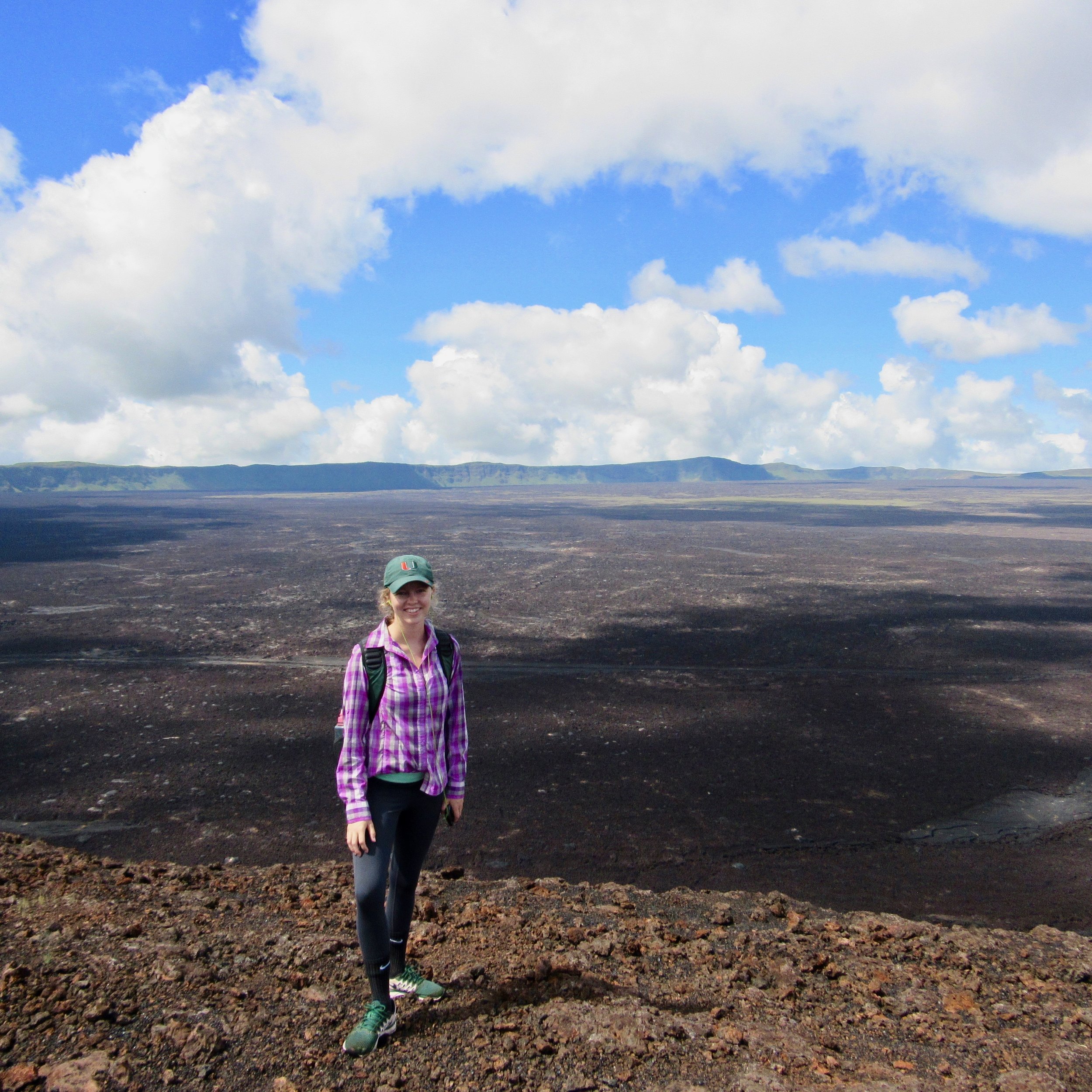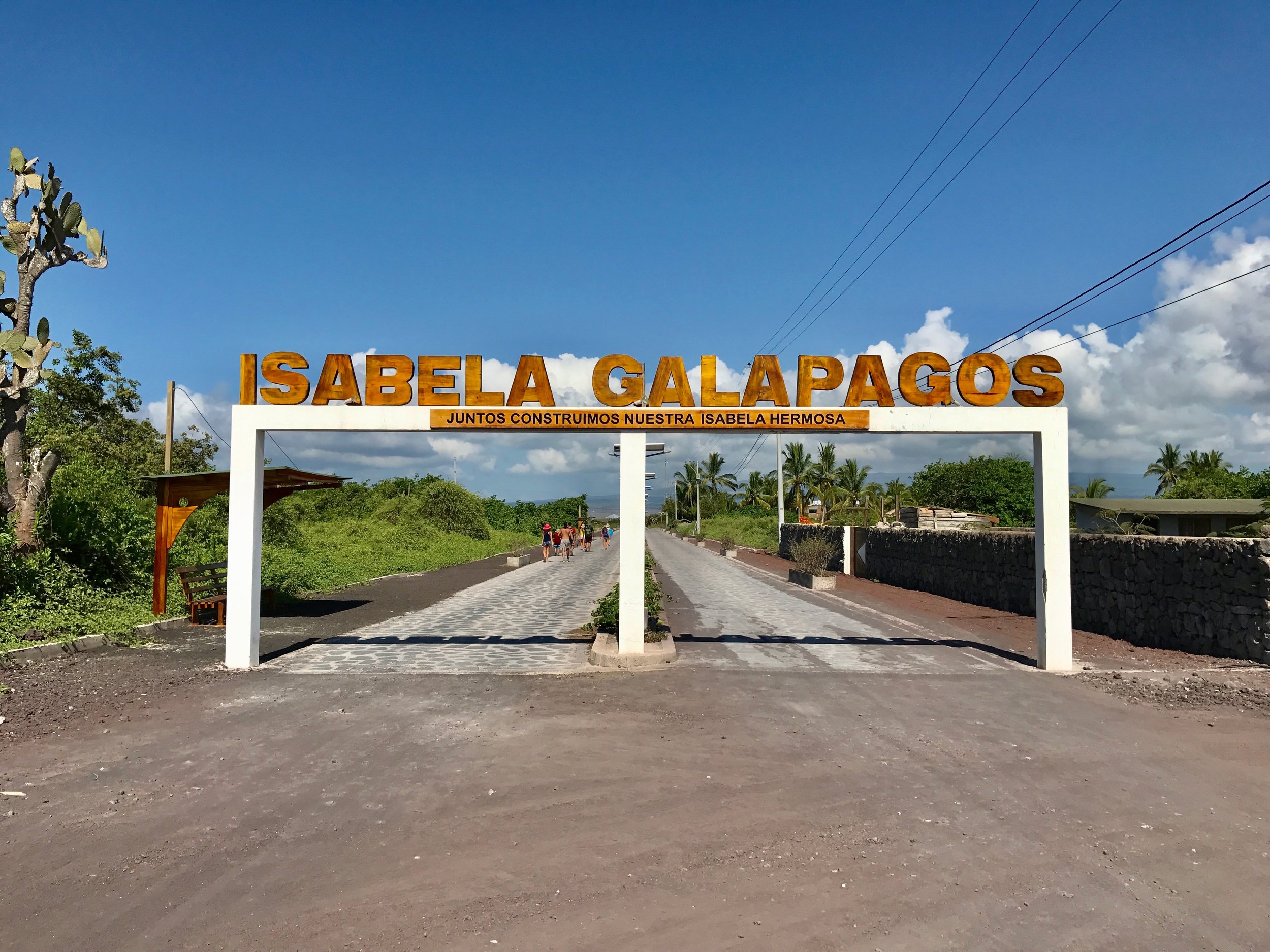Sara is a student at the Maritime University of Massachusetts, in her free time on Isabela she loves lying back in a hammock reading a good book or snorkelling at the local lagoon, Concha de Perla. Sara feels that her experience on Isabela is something she will never forget.
What Interested you in the Galapagos?
This is so far away from my home town I love seeing the raw nature and habitat of the animals - it’s hard not to interest you. When you’re at home imagining waking up in the mythological archipelago everyday with the wildlife roaming more freely than the people - it’s magical. The climate is amazing and even though its rainy season the rainfall is short and the days are hot - Isabela is a haven of untouched magic.
How did you become involved with IOI?
I became involved with the IOI because a friend volunteered on Isabela last year and she told me about it, I researched it and spoke with Amanda and loved the idea and the work that the IOI do, so here I am. I am doing the IOI in conjunction with my degree which is a Bachelors in Science with a concentration in Marine Safety and Environmental Protection from the Massachusetts Maritime Academy.
How long have you been part of this program?
3 weeks out of 4
What are your goals? Why are you participating?
I came to the Galapagos for credit for my school and to help in the completion of a project but in reality since I got here my goal became more personal it focuses on helping species thrive and the opportunity to give back to the wildlife and take part in things you don’t see everyday has also become a goal. The opportunity to work with the IOI is amazing and the ability to help preserve an ecologically sustainable and stable social economy whilst having an amazing time and helping to preserve this precious environment for further generations means so much to me. I would like my children to be able to see the tortoises, the boobies, and the iguanas in the wild and not just read about them. I also think it is up to my generation to step up and make a difference.
How are you liking the experience? Would you recommend this to other travellers?
I love it - working with the IOI the people are amazing, its super independent but if you have a problem the support is there and everything can be resolved quickly.
I love living in the volunteer house - my room mates KiKi and Georgia have become some of my best friends, its nice to be able to have people who share the same goals as you do. I now have friends from Canada, Argentina, London and all over the US that have all become people I trust and rely on and we’ve only known each other for 3 weeks. I think the ability to make such great friends in such a short period of time is because of the lack of electrical connection (e.g. wifi) - it forces you to speak to each other, share stories or just play worldwide card games until you become more comfortable in each others company. There is no option to hide behind your phone sending messages to people from back home living on Isabela you get to see your true self, and discover a life on a digital detox - but you are also meeting like minded individuals, which is so amazing.
I would recommend the IOI to other travellers for so many reasons but I think even if your here for just a month the impact it will have on your life will be forever. Living in such a small community it gives you the chance to stop and think, and breathe deeply living in a slower lifestyle it is the best contrast to life for me back in the States, whilst the work your doing is going to have such a positive impact you can't help but feel a sense of pride for the work your doing.
For people coming after you is there any advice you’d tell them?
Be open minded - people in the states are accustomed to everything being catered to them but here their lifestyle and way of living is unique to what I've seen before. Animals rule the island in an interesting role reversal - the marine iguanas live their life freely whereas the people are more controlled. Life back home is fast paced and you need to take some time to slow down to island time and then your going to love it, it may take a few days but soon it will be your way of life and you will be accustomed to it and never want to go home.
Keep your eyes open - when you’re on Isabela don’t spend all of your time looking through a camera take time to enjoy the view for yourself because sometimes memories are better than the photographs. I am all for taking my camera everywhere but sometimes you have to remember to put it down, switch of your phone lay back in the sand and watch the stars because trust me the photo will never beat the real thing.
The one thing you wished you’d pack.
Peanut butter - I love it and its expensive here, living in the volunteer house we make our own breakfasts, the shops have most things but peanut butter is particularly expensive because everything has to be shipped in from mainland and then brought from Santa Cruz - if you love something so much its best to bring it so as to avoid disappointment.
More books - I love reading a book on the beach usually lying in a hammock is my favorite way to spend the afternoon. IOI have a few books which you can borrow and then put one back in its place but I am reading a lot more than I expected.
One thing you regret bringing.
Hair Straighteners - I have no need for them here, since I unpacked on day one they have been a waste of space, Island life is very relaxed and its hard to imagine needing to dress up so much you may want to use them.
Highlight of your trip?
Los Tunules - I got to snorkel with Galapagos creatures and see unique landscapes which I’ve never seen anywhere else in the world.
Meeting Kiki and Georgia (friends from the volunteer house) - we all met each other on our way to Isabela despite the fact that we come from two sides of the USA and London we got on since day one. All three of us have a sense of adventure and we headed straight up to the highlands on our first week - we have become such good friends on more than just a work basis. We eat every meal together, spend the days laughing on the beach nights playing cards in our house or star-gazing. I would consider them some of my closest friends and I’ve only known them for 3 weeks and it’s felt like forever. The chances that I would have met them in our normal lives is slim but IOI gave me the opportunity to meet two girls who are just like me and I am really grateful for that.
-Georgia B

































